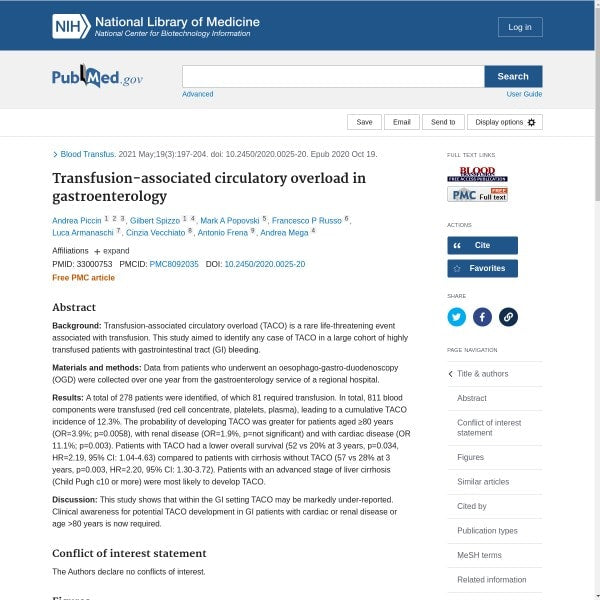
Immediate effects of whole blood donation on the endothelial surface layer and glycocalyx shedding
Share

Abstract
Background: Transfusion-associated circulatory overload (TACO) is a rare life-threatening event associated with transfusion. This study aimed to identify any case of TACO in a large cohort of highly transfused patients with gastrointestinal tract (GI) bleeding.
Materials and methods: Data from patients who underwent an oesophago-gastro-duodenoscopy (OGD) were collected over one year from the gastroenterology service of a regional hospital.
Results: A total of 278 patients were identified, of which 81 required transfusion. In total, 811 blood components were transfused (red cell concentrate, platelets, plasma), leading to a cumulative TACO incidence of 12.3%. The probability of developing TACO was greater for patients aged ≥80 years (OR=3.9%; p=0.0058), with renal disease (OR=1.9%, p=not significant) and with cardiac disease (OR 11.1%; p=0.003). Patients with TACO had a lower overall survival (52 vs 20% at 3 years, p=0.034, HR=2.19, 95% CI: 1.04-4.63) compared to patients with cirrhosis without TACO (57 vs 28% at 3 years, p=0.003, HR=2.20, 95% CI: 1.30-3.72). Patients with an advanced stage of liver cirrhosis (Child Pugh c10 or more) were most likely to develop TACO.
Discussion: This study shows that within the GI setting TACO may be markedly under-reported. Clinical awareness for potential TACO development in GI patients with cardiac or renal disease or age >80 years is now required.
